Black Shank
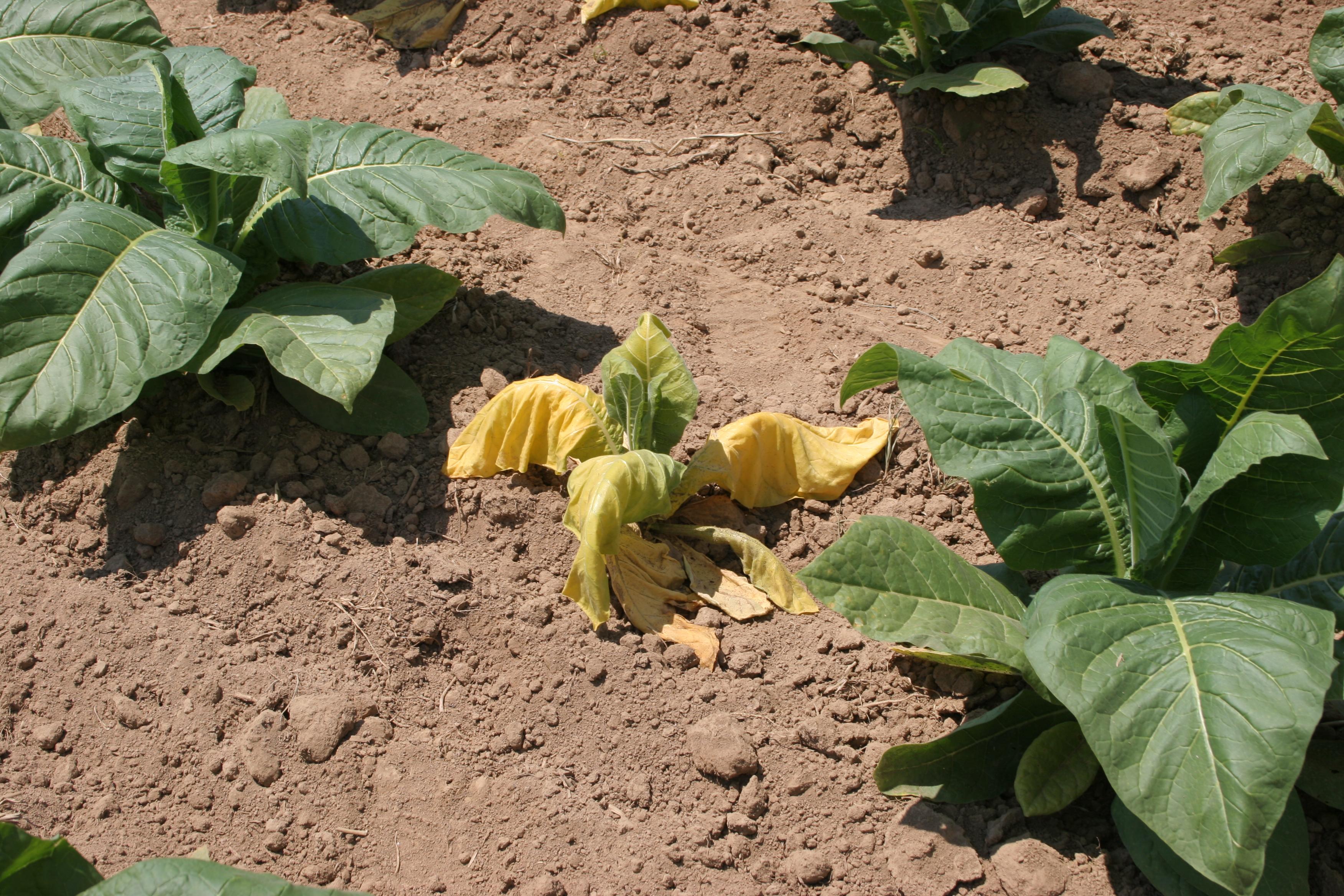 Black shank is caused by a fungus-like organism, also referred to as a "water mold." It is a very serious disease that affects tobacco roots and stems. Initially, plants wilt during the heat of the day and recover at night. As the disease progresses, plants wilt permanently and turn yellow; eventually, death follows. (Photo: Kenneth Seebold, UK)
Black shank is caused by a fungus-like organism, also referred to as a "water mold." It is a very serious disease that affects tobacco roots and stems. Initially, plants wilt during the heat of the day and recover at night. As the disease progresses, plants wilt permanently and turn yellow; eventually, death follows. (Photo: Kenneth Seebold, UK)
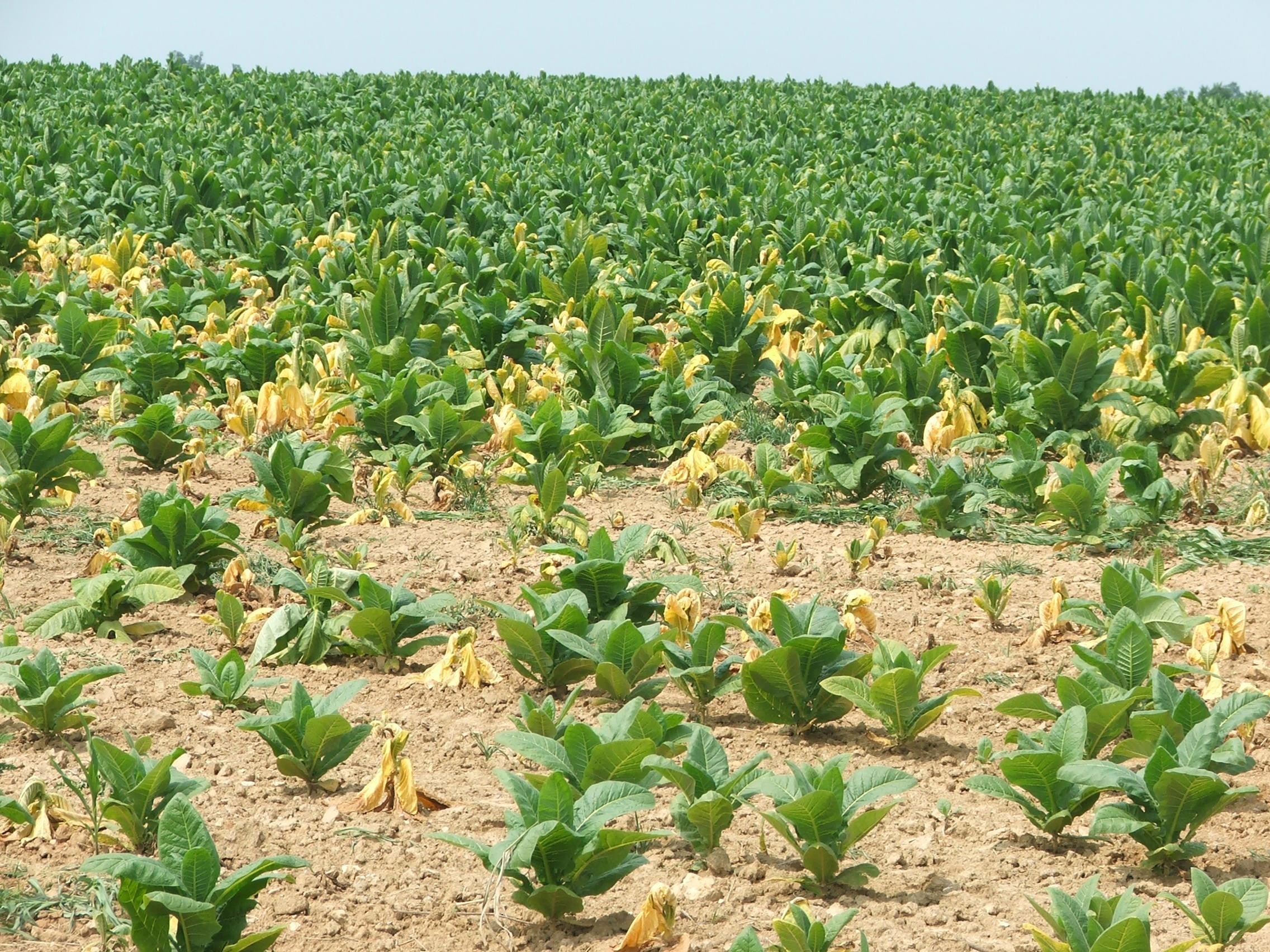 Tobacco plants affected by black shank may be scattered through portions of a field or distributed evenly in low, wet areas of the field. (Photo: Kenneth Seebold, UK)
Tobacco plants affected by black shank may be scattered through portions of a field or distributed evenly in low, wet areas of the field. (Photo: Kenneth Seebold, UK)
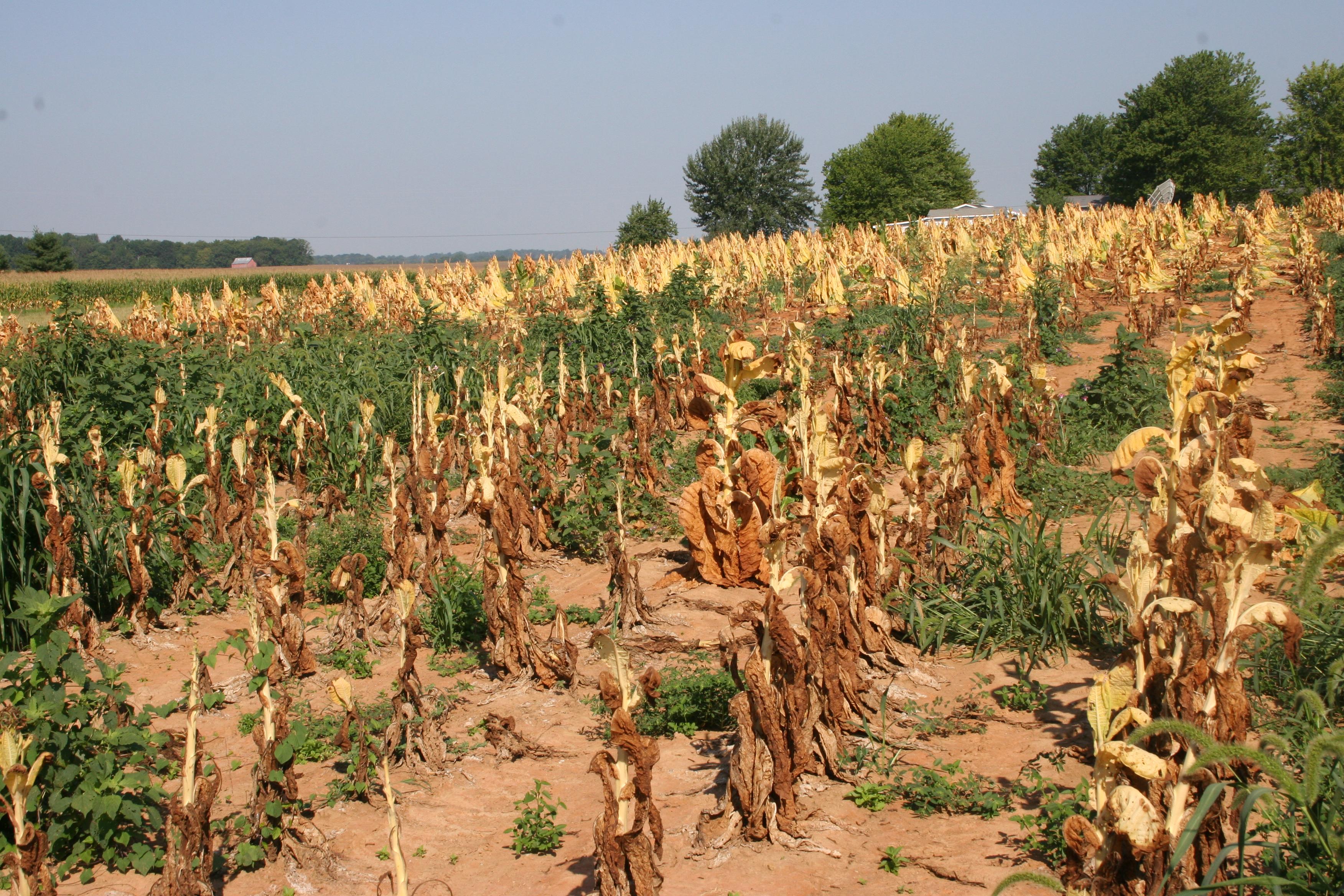 Black shank can cause severe damage in burley tobacco fields. (Photo: Kenneth Seebold, UK)
Black shank can cause severe damage in burley tobacco fields. (Photo: Kenneth Seebold, UK)
 The foliar symptoms (wilt, yellowing, and plant death) observed in the field occur as the result of root and lower shank (stem) damage, which impedes water and nutrient uptake. Note the black discoloration of the main root in this photo. (Photo: Kenneth Seebold, UK)
The foliar symptoms (wilt, yellowing, and plant death) observed in the field occur as the result of root and lower shank (stem) damage, which impedes water and nutrient uptake. Note the black discoloration of the main root in this photo. (Photo: Kenneth Seebold, UK)
 Blackening of the tobacco stem (shank) gives black shank its name. (Photo: Kenneth Seebold, UK)
Blackening of the tobacco stem (shank) gives black shank its name. (Photo: Kenneth Seebold, UK)
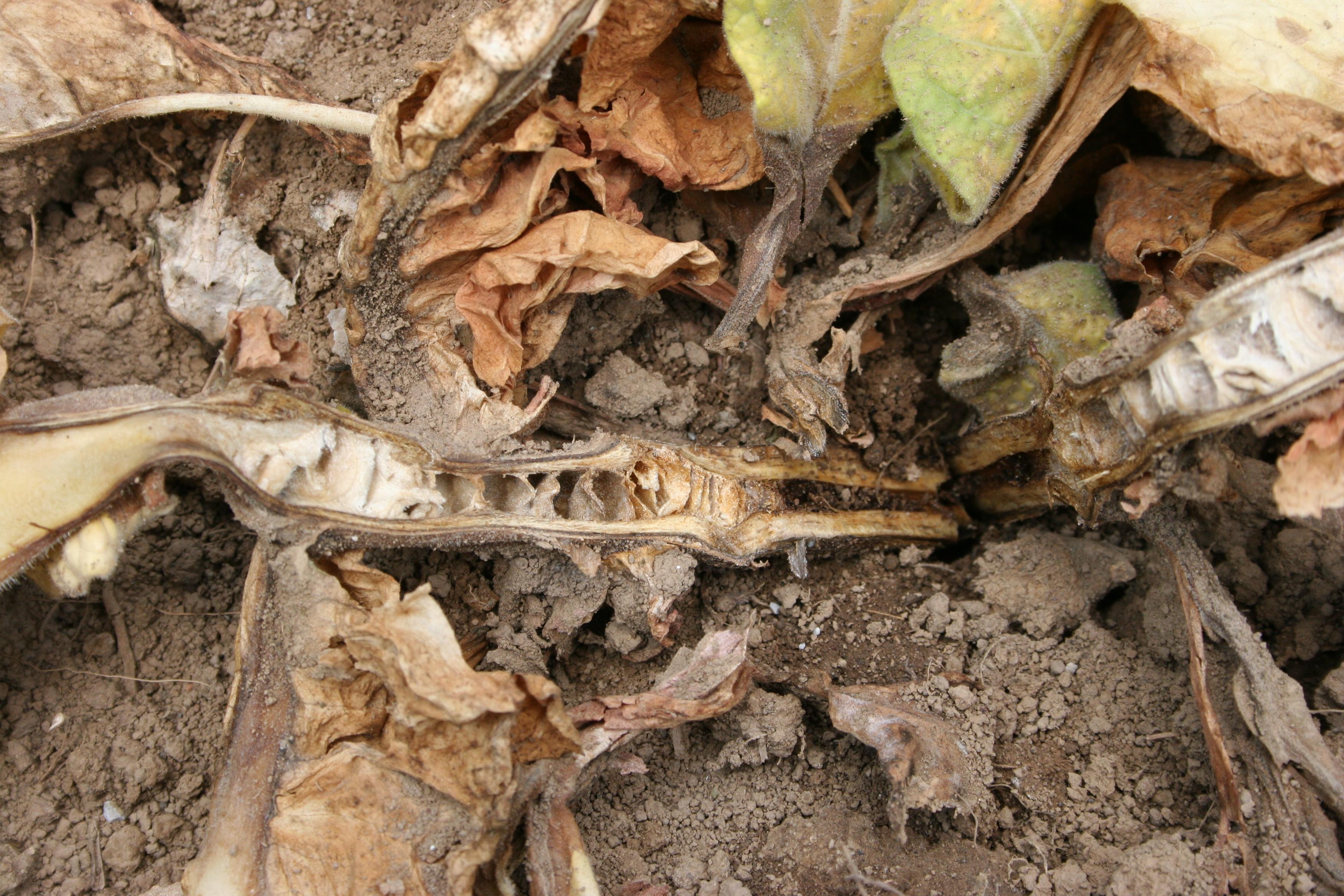 Splitting the stem of black shank infected tobacco plants reveals disking of the pith. (Photo: Kenneth Seebold, UK)
Splitting the stem of black shank infected tobacco plants reveals disking of the pith. (Photo: Kenneth Seebold, UK)
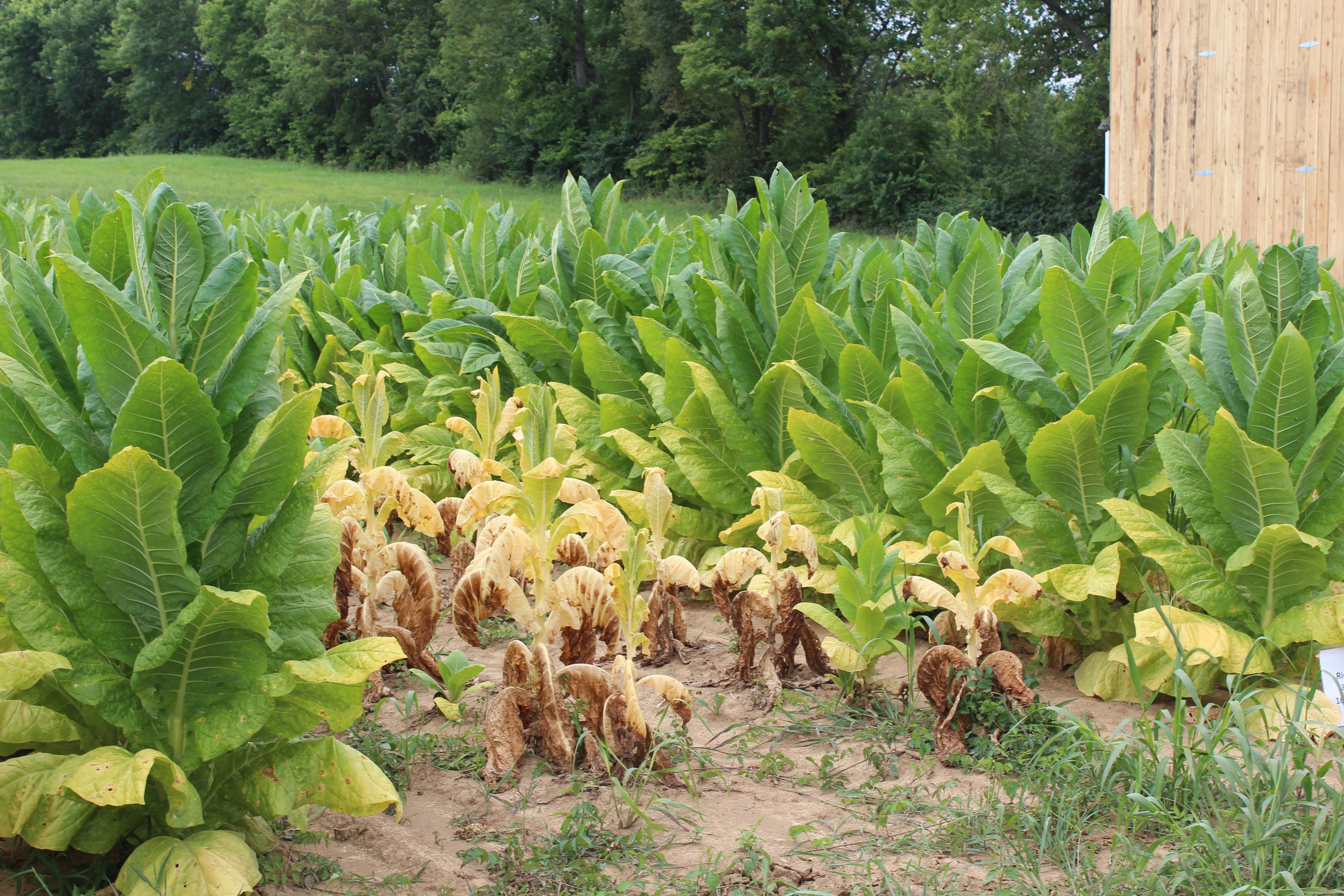 A non-resistant burley tobacco variety, shown in the middle two rows, is surrounded by resistant varieties. Black shank occurs in two "races" and varieties differ in their resistance level to each race, so careful consideration is important in variety selection. Information on disease resistance in burley and dark tobacco can be found in the Burley and Dark Tobacco Production Guide (ID-160).
A non-resistant burley tobacco variety, shown in the middle two rows, is surrounded by resistant varieties. Black shank occurs in two "races" and varieties differ in their resistance level to each race, so careful consideration is important in variety selection. Information on disease resistance in burley and dark tobacco can be found in the Burley and Dark Tobacco Production Guide (ID-160).
